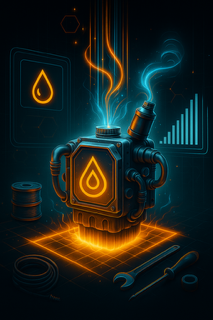The Future of AdBlue Control: How Software Programming is Shaping Emissions Technology

Modern diesel vehicles use AdBlue systems to meet strict emissions standards by reducing the nitrogen oxide emissions. This system is managed by software inside the vehicle’s ECU (Engine Control Unit) which are constantly monitoring AdBlue levels, injector function, and NOx sensor feedback. When this system detects a fault e.g., low AdBlue levels or dosing issues, it triggers warning lights, activates limp mode, and can even stop the engine from starting altogether.
In specific trades where vehicle uptime is crucial, warning lights and limp modes can lead to massive downtime and costs for people. This is where AdBlue Software Programming has become a solution for a lot of people.
How AdBlue Control Software Works
At the core, the AdBlue control module uses sensor data to regulate the SCR system. The ECU software:
- Measures NOx levels in the exhaust
- Calculates the precise AdBlue dosing rate.
- Checks system health through pressure, temperature, and fluid level sensors.
If the software detects a fault, it will automatically follow the manufacturers set rules. It will often escalate from a warning light to reduced power, and ultimately to a non-engine start situation if the fault isn’t resolved.
Programming for Fault Overrides
Specialists are able to modify the ECU software to change how the vehicle responds to AdBlue-related faults. This can include:
- Stopping the system from being able to enter limp mode.
- Stopping the countdowns to non-starts.
- Disable the persistent dashboard warning lights related to SCR.
This modification involves changing the code in the ECU firmware, which can be done by bench programming or over the air. A skilled technician can either alter the parameters or deactivate the faults checks entirely, which will allow the vehicle to continue operating even if the AdBlue system is malfunctioning.
Why is this process considered?
- Very minimal downtime – vehicles who are undergoing this process will remain operational while the mechanical issues are being dealt with.
- Lower maintenance disruption – avoids the man costs that you face with breakdowns due to AdBlue issues.
- Operational flexibility – this is crucial for industries where constant availability is essential.
Legal and Compliance Considerations
It is important to think about and consider that altering the AdBlue system can be frowned upon in many regions at is may not comply with emissions standards in certain places. So it important to think about this as it may result in fines. However, off-road vehicles, agricultural vehicles, and export-only applications are fine for this and can be legally applied to prevent unnecessary downtime.
The Future of AdBlue Software Programming
It is clear that the software programming techniques will continue to evolve and improve as time goes by. We may see more refined control over the warning systems and vehicle performance. So, if laws and restrictions do become stricter and manufacturers make it harder to bypass, there may be new advances to tackle this issue.
To conclude
The future of AdBlue Software Programming looks bright, with more people experiencing the issues that come with having AdBlue, the more are choosing to bypass them and avoid all warnings and limp mode situations. It is saving a lot of people time and money and as it becomes more popular, the more it is technically advancing and getting better.







